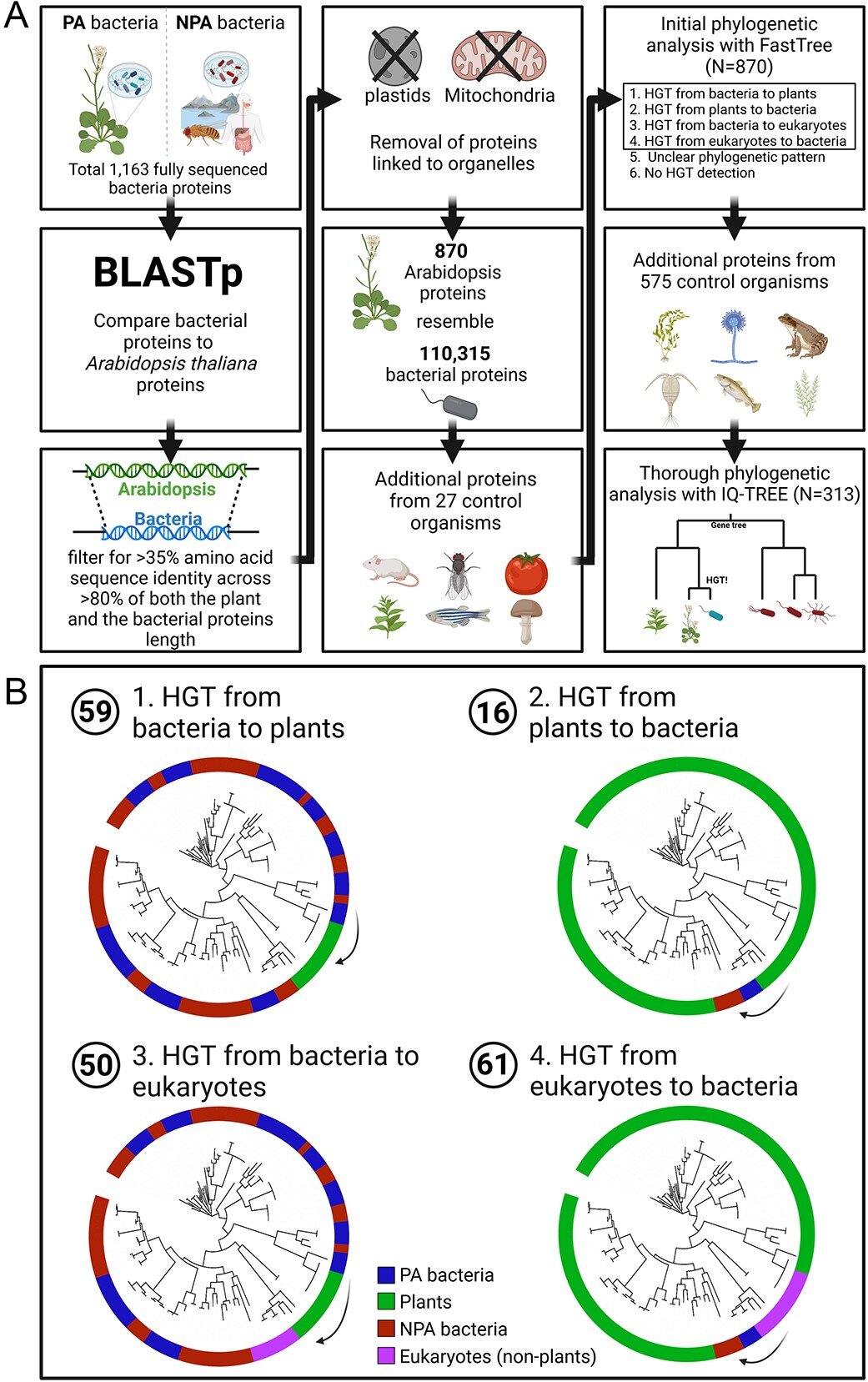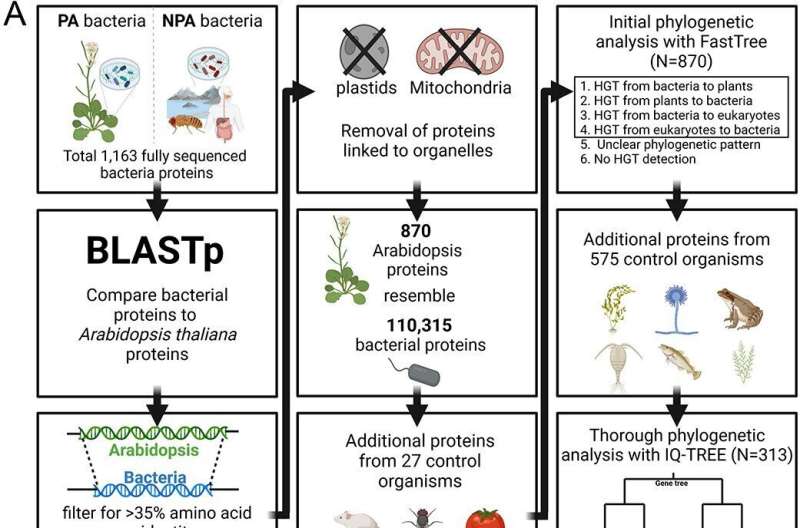

A recent study has unveiled how plants and bacteria exchange genes to boost plant health and development. The team discovered 75 genes that were transferred between small, fast-growing plants (Arabidopsis thaliana) and its bacterial companions, influencing key processes like carbohydrate metabolism and hormone synthesis. This finding not only deepens our understanding of plant biology but also opens up exciting possibilities for enhancing crop resilience and productivity through advanced biotechnologies.
The study, led by Dr. Asaf Levy from the Institute of Environmental Science at Hebrew University, in partnership with Dr. Yulia Fridman, Dr. Hitaishi Khandal, Prof. Sigal Savaldi-Goldstein from Faculty of Biology, Technion-Israel Institute of Technology, reveals a dynamic cross-kingdom horizontal gene transfer (HGT) that could revolutionize our understanding of plant and bacterial biology and agricultural practices.
The work is published in the journal ISME Communications.
Plants rely on a complex community of bacteria which are crucial for their health and development. The research team hypothesized and confirmed that the close and long-standing relationship between plants and their microbiota facilitates the rare phenomenon of horizontal gene transfer, where genes are transferred directly between different species.
In a new discovery, Dr. Levy and his team identified 75 unique genes that were transferred horizontally between Arabidopsis thaliana, a commonly studied model plant, and bacteria. Plants acquired 59 genes from bacteria and bacteria acquired at least 16 genes from plants during evolution. These genes primarily enhance carbohydrate metabolism and auxin biosynthesis, pivotal for plant growth regulation and immune responses.
For example, a certain group of bacteria, Streptomyces, acquired from plants a gene that allows them to break down chitin, a compound which is prevalent in insects and fungi. In addition, the study identified 111 genes that were transferred between bacteria and eukaryotes in general (not necessarily plants).
Moreover, the study validated these findings by demonstrating that a bacterial gene from the Actinobacteria phylum, when expressed in Arabidopsis, corrected growth defects associated with the plant’s DET2 gene mutation. DET2 is essential for the synthesis of a type of plant hormone called Brassinosteroid. These are crucial for plant growth and development.
A plant that lacks the DET2 gene is a dwarf plant. However, by expressing the bacterial homologous DET2 gene inside plants, the researchers were able to get a plant at a normal size, demonstrating that the two genes have the same function.
“This study highlights the intricacies of plant-microbe interactions and we were surprised that genes were acquired by organisms that are located so remotely on the tree of life, such as bacteria and plants. A bacterial gene acquired by plant has to undergo some changes to be active inside plant cells. It will be interesting to study the mechanisms by which the genes are acquired and evolved. The study opens new avenues for biotechnological applications in agriculture,” said Dr. Levy.
“Understanding and harnessing these gene transfers could lead to innovative strategies to enhance crop resilience and productivity if we understand why and also how certain genes were transferred. It is also intriguing if bacteria exchange genes with other organisms such as animals, including humans.”
With global agriculture facing increasing challenges from climate change and population growth, innovations that enhance crop resilience and productivity are urgently needed. According to projections, advancements in plant-microbe interactions could potentially increase global food production by significant margins, addressing the growing demand for food security. Currently, the agricultural sector spends billions annually combating plant diseases and environmental stresses.
More information:
Shelly Haimlich et al, Widespread horizontal gene transfer between plants and bacteria, ISME Communications (2024). DOI: 10.1093/ismeco/ycae073
Provided by
Hebrew University of Jerusalem
Citation:
Boosting plant health: The role of gene exchange with bacteria (2024, July 23)
retrieved 24 July 2024
from https://phys.org/news/2024-07-boosting-health-role-gene-exchange.html
This document is subject to copyright. Apart from any fair dealing for the purpose of private study or research, no
part may be reproduced without the written permission. The content is provided for information purposes only.